Have you ever felt a blast of cold air coming from the bottom of a refrigerator? Do you wonder if it’s normal or if there’s a problem with your appliance?
The answer is simple: the cold air coming from the bottom of your refrigerator is normal and necessary for its proper functioning.
In this article, we’ll explain why your fridge needs to release cold air from its bottom, how it works, and what you can do to make sure everything is working correctly. Let’s dive in!
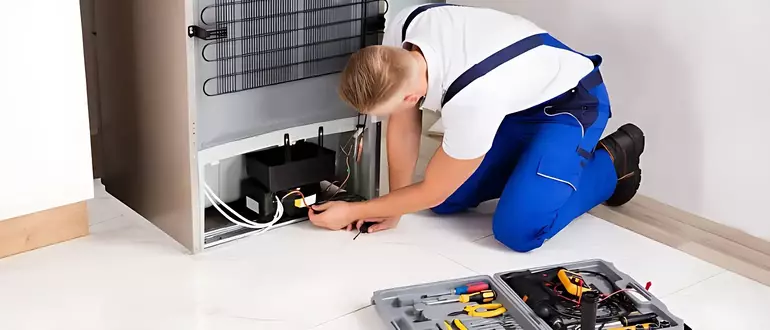
Refrigerator Mechanics: How Cold Air Circulates
A refrigerator is a crucial appliance that helps to maintain the freshness and quality of food by providing a consistently cold environment. The main principle behind the functioning of a refrigerator is the circulation of cold air.
This circulation process is essential for maintaining the desired temperature and ensuring even cooling throughout the refrigerator. The following are the key components and the mechanism by which cold air circulates within a refrigerator.
Compressor
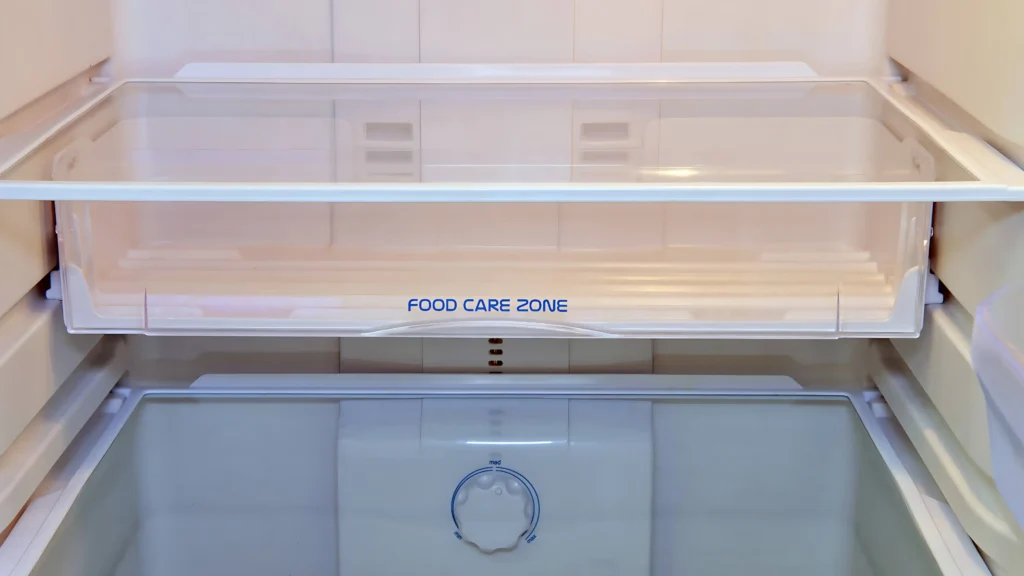
The compressor is the heart of the refrigerator’s cooling system. It compresses the refrigerant gas, raising its temperature and pressure. The hot, high-pressure refrigerant gas then moves through a series of tubes towards the condenser.
Condenser
The condenser is responsible for dissipating the heat absorbed by the refrigerant during compression.
As the refrigerant gas flows through the condenser coils, it releases heat to the surrounding air, and the gas cools down, turning into a high-pressure liquid.
Expansion Valve
The expansion valve is a throttling device that controls the flow of the high-pressure liquid refrigerant into the evaporator.
As the liquid refrigerant passes through the expansion valve, it experiences a drop in pressure and temperature, turning into a cold, low-pressure mixture of liquid and vapor.
Evaporator
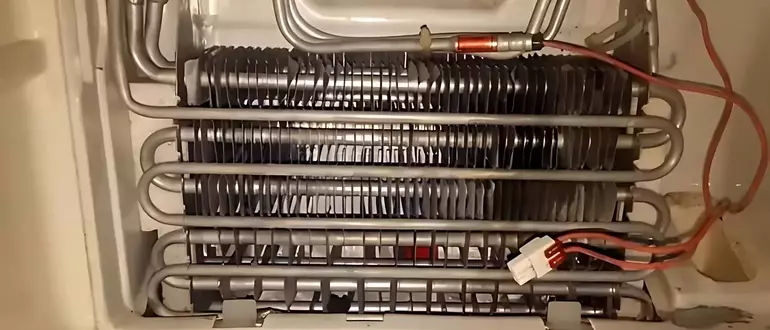
The evaporator is a series of coils located inside the refrigerator compartment. As the cold refrigerant flows through these coils, it absorbs heat from the air inside the refrigerator.
This heat absorption causes the refrigerant to evaporate, turning it back into a low-pressure gas. The cold air generated in the evaporator is then circulated within the refrigerator.
Air Circulation
To ensure even cooling throughout the refrigerator, cold air must be properly circulated. This is achieved through the use of fans and strategically placed vents.
The cold air from the evaporator is blown by the fans through the vents, reaching all corners of the refrigerator.
As the cold air absorbs heat from the items stored in the refrigerator, it becomes warmer and rises.
The warm air is then drawn back towards the evaporator, where it cools down once again as it comes into contact with the cold evaporator coils.
Defrosting System
Over time, frost can accumulate on the evaporator coils, reducing the refrigerator’s efficiency.
The defrosting system periodically melts this frost, allowing the refrigerator to maintain optimal cooling performance.
The defrost cycle is controlled by a timer or an electronic control system.
The continuous circulation of cold air, along with the heat exchange process involving the compressor, condenser, expansion valve, and evaporator, is what enables a refrigerator to maintain a consistent temperature and keep your food fresh and safe.
Proper maintenance, such as cleaning the condenser coils and checking the door seals, is essential for ensuring the longevity and efficiency of your refrigerator.
Cold Air Coming from Bottom of Refrigerator-Common Causes
There are several common causes of cold air coming from the bottom of a refrigerator:
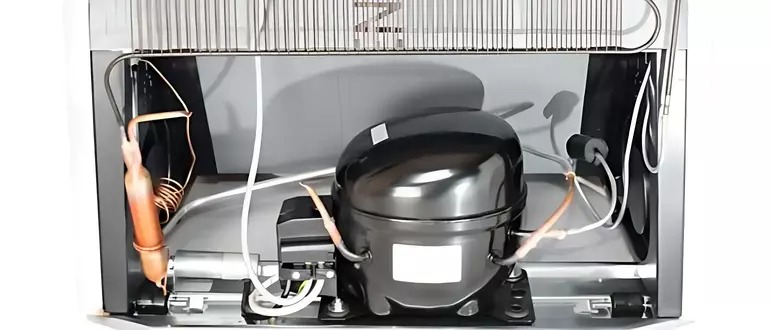
Damaged or Worn out Door Gasket
The door gasket is a rubber seal that lines the edge of the refrigerator door. If it is damaged or worn out, it can allow cold air to escape from the refrigerator, which can cause cold air to accumulate at the bottom.
Blocked Vents
The refrigerator has vents at the bottom and top that allow air to circulate. If these vents are blocked, it can cause cold air to accumulate at the bottom.
Dirty Condenser Coils
The condenser coils are located at the bottom of the refrigerator and help remove heat from the fridge. If they are dirty or clogged, they can cause the fridge to work harder and create more cold air, which can accumulate at the bottom.
Malfunctioning Evaporator Fan
The evaporator fan is responsible for circulating air throughout the fridge. If it is not working properly, it can cause cold air to accumulate at the bottom.
Refrigerant Leak
If there is a leak in the refrigerant system, it can cause the fridge to produce too much cold air, which can accumulate at the bottom.
If you are experiencing cold air coming from the bottom of your refrigerator, it is recommended to have it checked by a professional technician to diagnose and fix the issue.
Cold Air Coming from Bottom of Refrigerator: How to Fix?
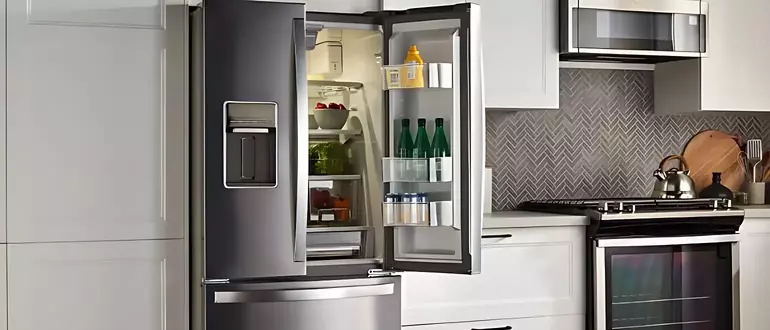
Identify the Cause of the Problem
If you notice that cold air is coming from the bottom of your refrigerator, it’s likely that there is an issue with the appliance’s cooling system. The first step in fixing this problem is to identify the cause.
One common reason for cold air coming from the bottom of the refrigerator is a faulty door gasket.
This can cause air leaks, which can lead to the refrigerator not cooling properly.
Another possible cause is a blocked vent or air channel, which can also interfere with the appliance’s cooling system.
Replace the Faulty Door Gasket
If the issue is a faulty door gasket, replacing it is the most effective solution. You can purchase a new door gasket from a local appliance store or online.
Once you have the new gasket, remove the old one from the door and clean the area thoroughly.
Then, attach the new gasket to the door using adhesive or screws, depending on the model of your refrigerator.
Finally, make sure the gasket is properly aligned and sealed to prevent any air leaks.
Clear Blocked Vents and Air Channels
If the problem is a blocked vent or air channel, you’ll need to clear them out to restore proper airflow. First, unplug the refrigerator to avoid any electric shocks.
Then, locate the vents and air channels, which are usually located at the back of the appliance or on the sides.
Use a vacuum cleaner or a soft brush to remove any debris, such as dust, dirt, or food particles, that may be clogging the vents or channels. Once you’ve cleared the blockage, plug in the refrigerator and check if the cooling system is functioning properly.
Call a Professional Repair Service
If you’ve tried the above steps and the problem persists, it may be time to call in a professional repair service. They have the necessary expertise and tools to diagnose and fix the issue quickly and effectively.
Additionally, if your refrigerator is still under warranty, calling a professional service may be your best option to avoid voiding the warranty. Don’t hesitate to ask for
recommendations from friends or family members, or look for online reviews to find a reputable repair service in your area.
Troubleshooting and DIY Fixes for Cold Air Escapes in refrigerator
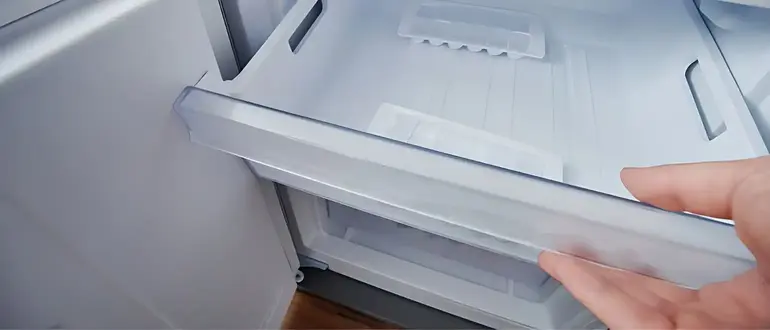
Check the Door Seals
One of the most common reasons for cold air escaping from the refrigerator is worn-out door seals.
Over time, these seals can become damaged or lose their grip, causing cold air to escape.
To check for this problem, try inserting a sheet of paper between the door and the refrigerator body. If the paper slips out easily, it’s time to replace the door seals.
Clean the Condenser Coils
The condenser coils located at the back or bottom of your refrigerator help to remove heat from the appliance.
When these coils become dirty, they can’t function properly, causing the refrigerator to work harder and longer to maintain the set temperature.
This can result in cold air escaping from the refrigerator. To fix this problem, unplug the refrigerator and clean the coils using a vacuum cleaner or a brush.
Check the Temperature Settings
Make sure that the temperature settings of your refrigerator are set correctly. If the temperature is too high, it can cause the refrigerator to overwork and generate more cold air, which can escape from the appliance.
Adjust the temperature settings to the recommended level, usually between 35 and 38 degrees Fahrenheit for the refrigerator compartment.
Inspect the Door Hinges
Check the door hinges for any damage or looseness. If the door is not closing properly or there is a gap between the door and the refrigerator body, cold air can escape.
Tighten the screws and adjust the hinges to make sure that the door is properly aligned and sealed.
Defrost the Freezer
If the freezer compartment is frosty, it can cause the refrigerator to work harder to maintain the set temperature, leading to cold air escaping from the appliance.
Defrost the freezer by unplugging the refrigerator or turning off the freezer compartment for a few hours. Once the ice has melted, clean the freezer and turns it back on.
When to Call a Professional: Recognizing the Signs
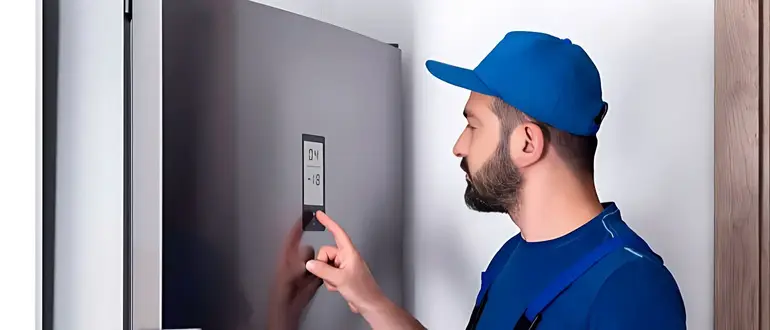
Strange Noises
If your refrigerator is making strange noises, such as rattling, buzzing, or clicking, it could be a sign of a more serious problem. These noises may indicate issues with the
compressor, fan, or other critical components of the appliance. It’s best to call a professional to diagnose and fix the issue before it worsens.
Frequent Breakdowns
If your refrigerator is breaking down frequently, even after attempting DIY fixes, it’s time to call in a professional.
Frequent breakdowns may be due to underlying issues with the appliance that requires the expertise of a trained technician to fix.
Unusual Odors
If your refrigerator is emitting unusual odors, it may be due to mold, mildew, or other contaminants growing inside the appliance.
These odors can be harmful to your health and indicate a deeper problem with the appliance.
A professional can inspect and fix the issue to ensure your refrigerator is safe and functioning properly.
Warm or Hot Exterior
If the exterior of your refrigerator feels warm or hot to the touch, it could be a sign of a serious problem with the cooling system.
This issue can lead to the escape of cold air and the spoilage of food. A professional can quickly diagnose and fix the issue to prevent further damage to your appliance.
Water Leaks
If you notice water leaking from your refrigerator, it could be due to a faulty water supply line, drain pan, or other issue. Water leaks can cause serious damage to your floors and other nearby appliances, so it’s best to call a professional to fix the issue promptly.
FAQs
Can a faulty door gasket cause cold air to escape from the refrigerator?
Yes, a faulty door gasket can cause cold air to escape from the refrigerator. When the gasket is damaged or worn out, it can cause air leaks, which can lead to the refrigerator not cooling properly.
Can Cleaning The Condenser Coils Help Fix Cold Air Coming From The Bottom Of The Refrigerator?
Yes, cleaning the condenser coils can help fix cold air coming from the bottom of the refrigerator.
When the coils are dirty, they can’t function properly, causing the refrigerator to work harder and longer to maintain the set temperature.
This can result in cold air escaping from the refrigerator.
How Often Should I Check And Replace The Door Gasket On My Refrigerator?
It’s a good idea to check the door gasket on your refrigerator periodically, at least once a year.
If you notice any damage or wear, it’s time to replace the gasket to prevent cold air from escaping.
Is it normal for a refrigerator to generate cold air from the bottom?
No, it’s not normal for a refrigerator to generate cold air from the bottom. This can be a sign of an issue with the cooling system, which should be addressed promptly to avoid further damage to the appliance.
Final Words
The cold air coming from the bottom of your refrigerator is a necessary component of its operation. This cold air helps to regulate the temperature inside the fridge, keeping your food fresh and safe to eat.
While it’s normal to feel a blast of cold air when you open the fridge door, there are some things you can do to ensure that everything is working correctly.
Regularly cleaning the coils and checking the seals on the doors can help maintain the efficiency of your fridge and prevent any problems.
If you ever have concerns about the operation of your refrigerator, it’s always best to consult with a qualified appliance technician.
By understanding how your fridge works and taking care of it, you can ensure that it will continue to serve you well for years to come.
